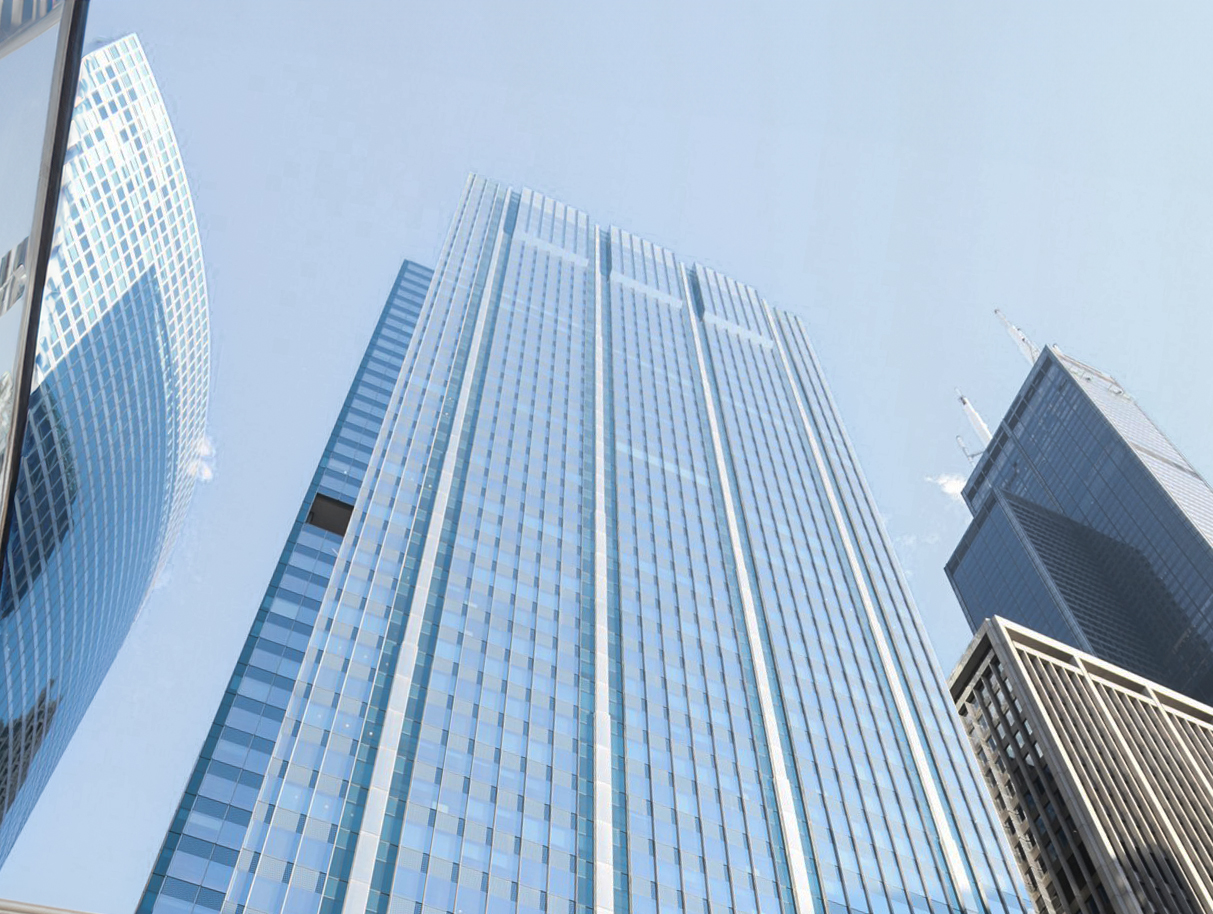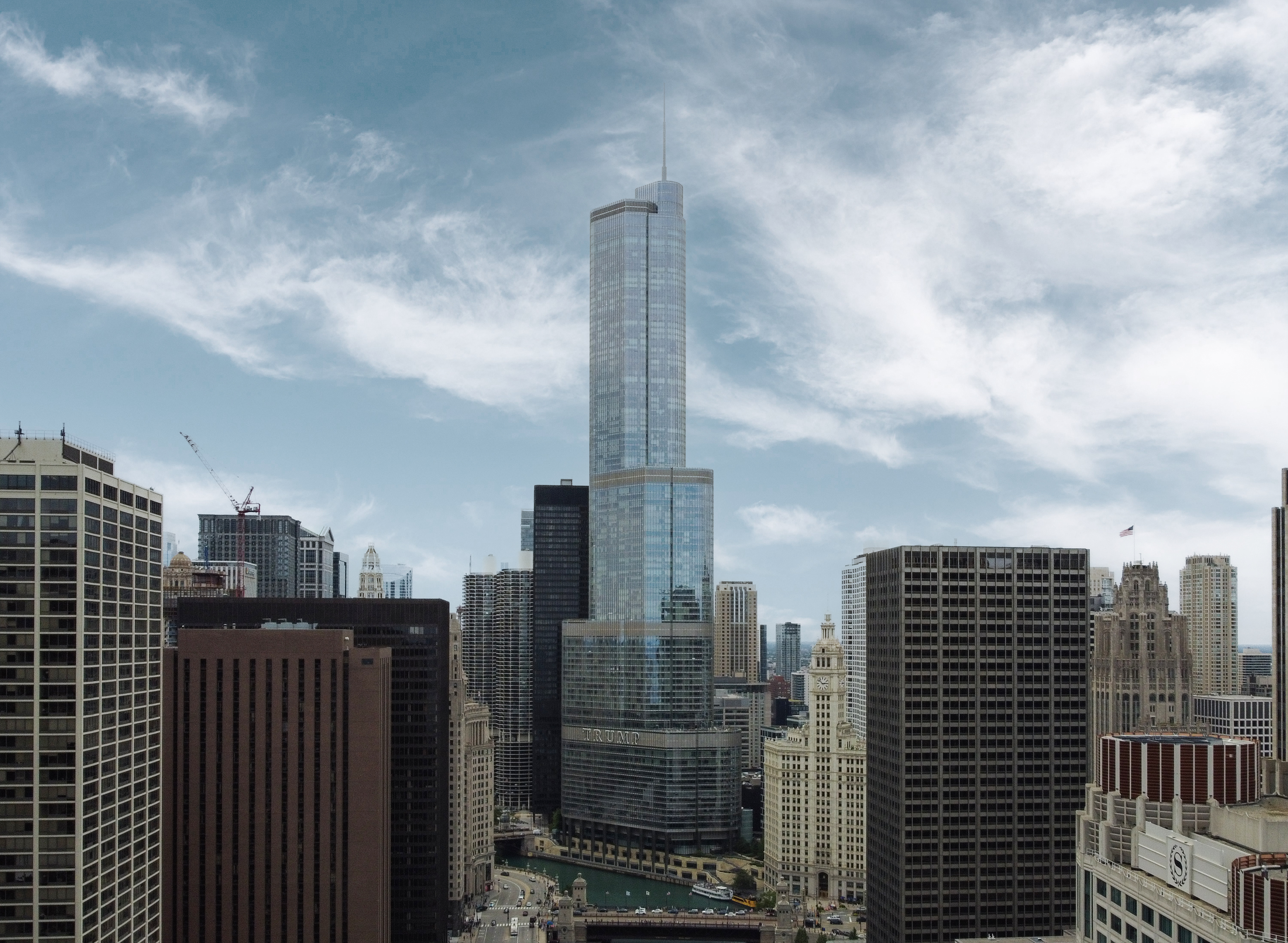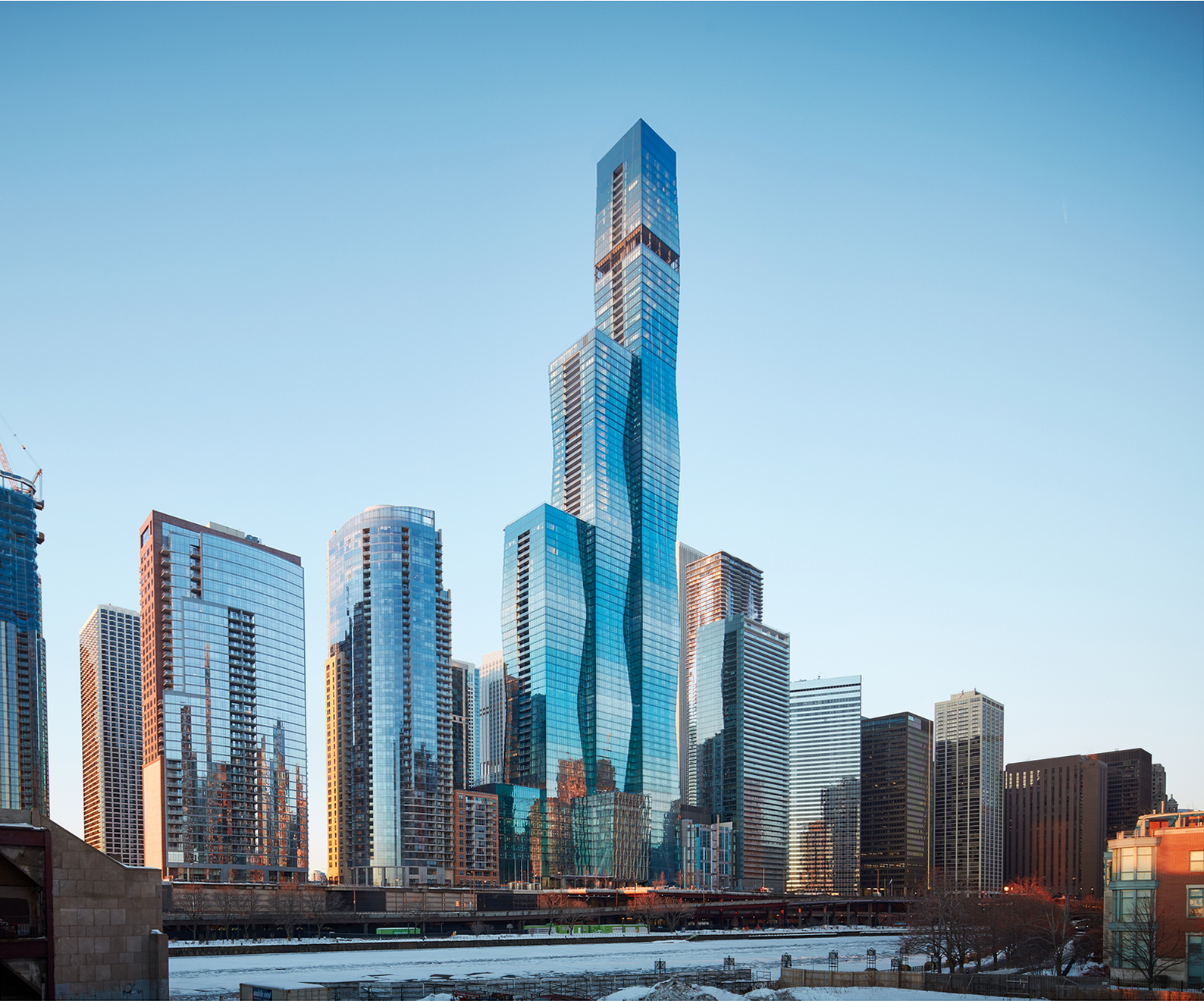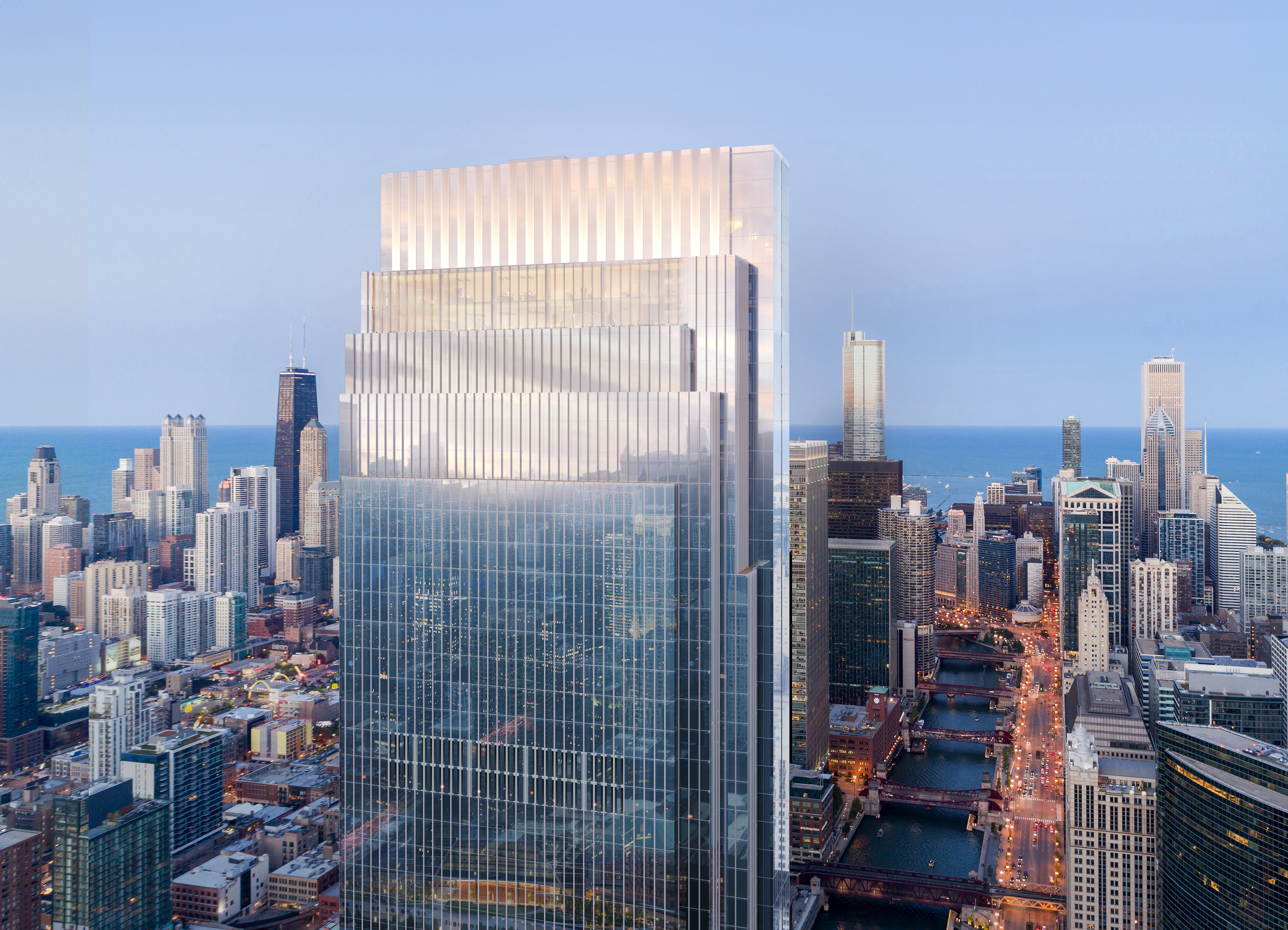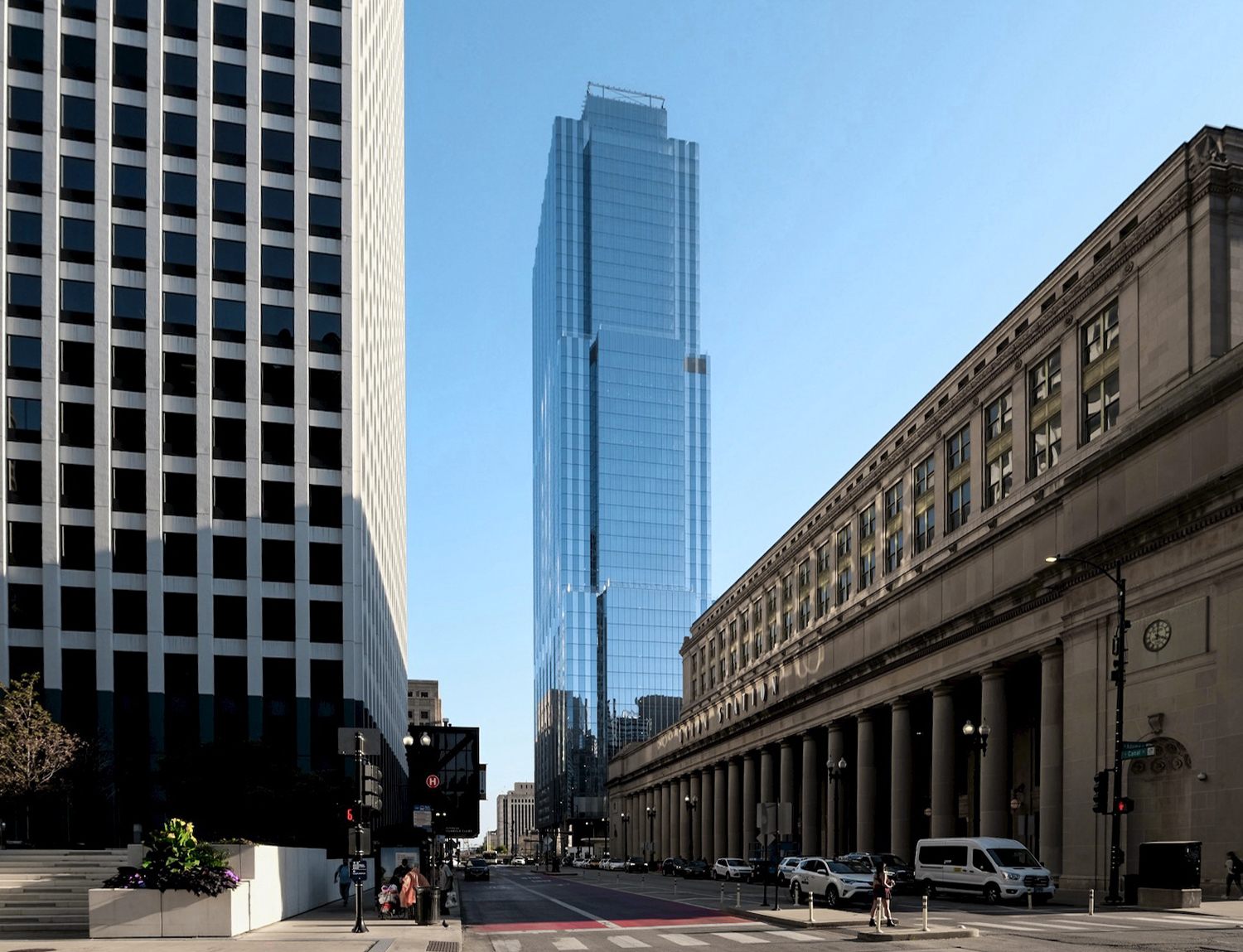The 111 South Wacker Building is a Contemporary skyscraper designed by Lohan Caprille Goettsch Architects, with Jim Goettsch as lead architect, and built between 2003 and 2005 in Chicago, IL.
Its precise street address is 111 South Wacker Drive, Chicago, IL. You can also find it on the map here.
An interesting fact is that the buildign that previously occupied this site, the USG Building, demolished in 2003, was the tallest building to ever be demolished in Chicago.
